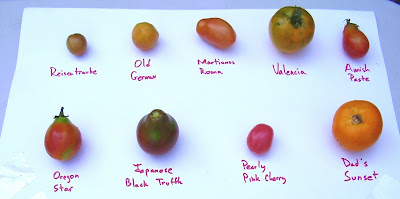Harvests continue, though the total was down from last week’s bumper high. If memory serves, the total for the 19th was about 125 pounds. And thanks to the DePaul Oxfam group and the Loyola vegetarians for their help!
A number of volunteers worked hard harvesting the Italian beans, which have continued to produce well:

Check out the eggplant, daikon, radishes and carrots ready for transport:

And we were happy to see a good crop of red peppers:

It seems like the neem oil treatment is helping the cucumbers and zucchini. The cucumber plants don’t look beautiful but they have continued to produce both the more familiar dark green variety and the paler, striated Armenian variety. There was some debate about whether to pull up the plants this week so that a cover crop could be sown, but we decided to give them another week since there were a number of smaller yet-to-be cucumbers still on the vine.
The zucchini look fab, and this blogwriter can vouch for their lovely sweet taste, delicious grilled with a little olive oil and rosemary. (Last week, a rather large specimen was overlooked during harvest and serendipitously ended up in my kitchen.)

Super-volunteer Al was the only one brave enough to continue the seed-saving process. Having fermented in the shed for a week, the cups of saved seeds did not look appealing:

But Al set about washing and then drying them on plates so we’ll have them for next year.


















